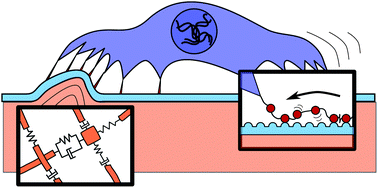Dissipative interactions in cell–matrix adhesion
Abstract
The mechanical properties of cell microenvironments, cells themselves and the linking biomolecular constituents are increasingly recognized as important parameters in understanding and controlling cell behaviour. Specifically, cell adhesion – the first step of interaction – controls many processes in cell signalling. In this context the viscoelastic characteristics of involved biopolymer systems have to be considered as a key to the understanding of the underlying mechanisms. While elasticity is currently heavily addressed in biophysical and biomaterials science, studies on viscous and dissipative contributions are underrepresented and their impact is frequently neglected. In this review we point out that there is a need to overcome this imbalance and to reveal the impact of dissipative processes in cell–matrix interaction.


 Please wait while we load your content...
Please wait while we load your content...